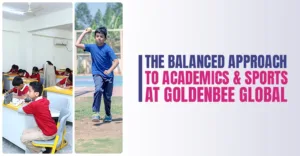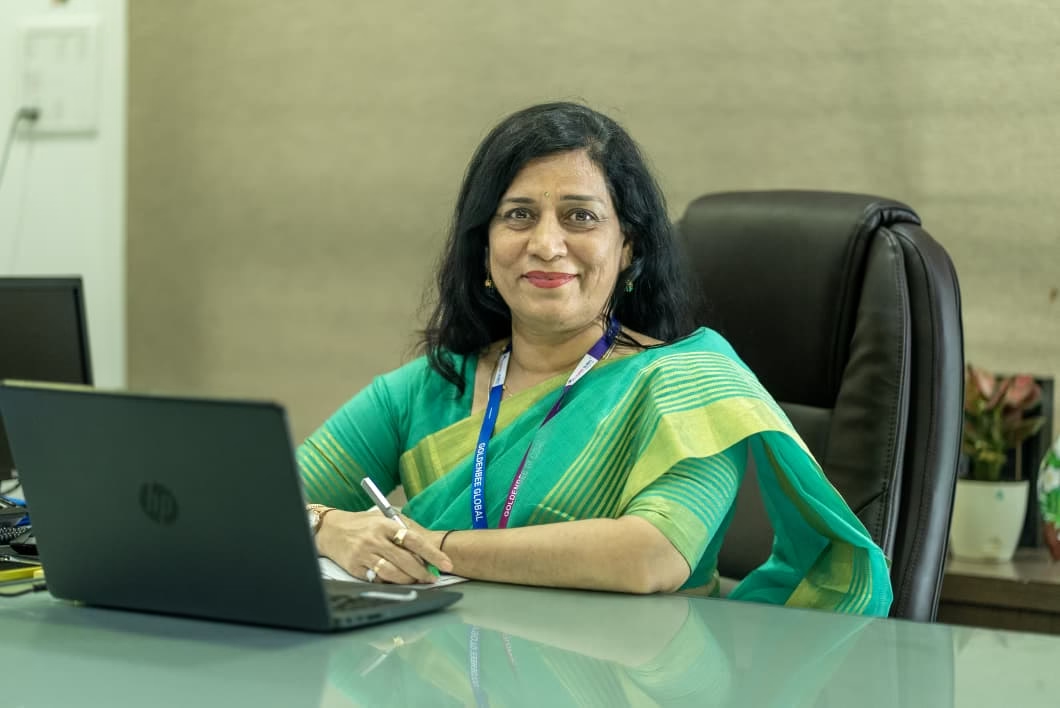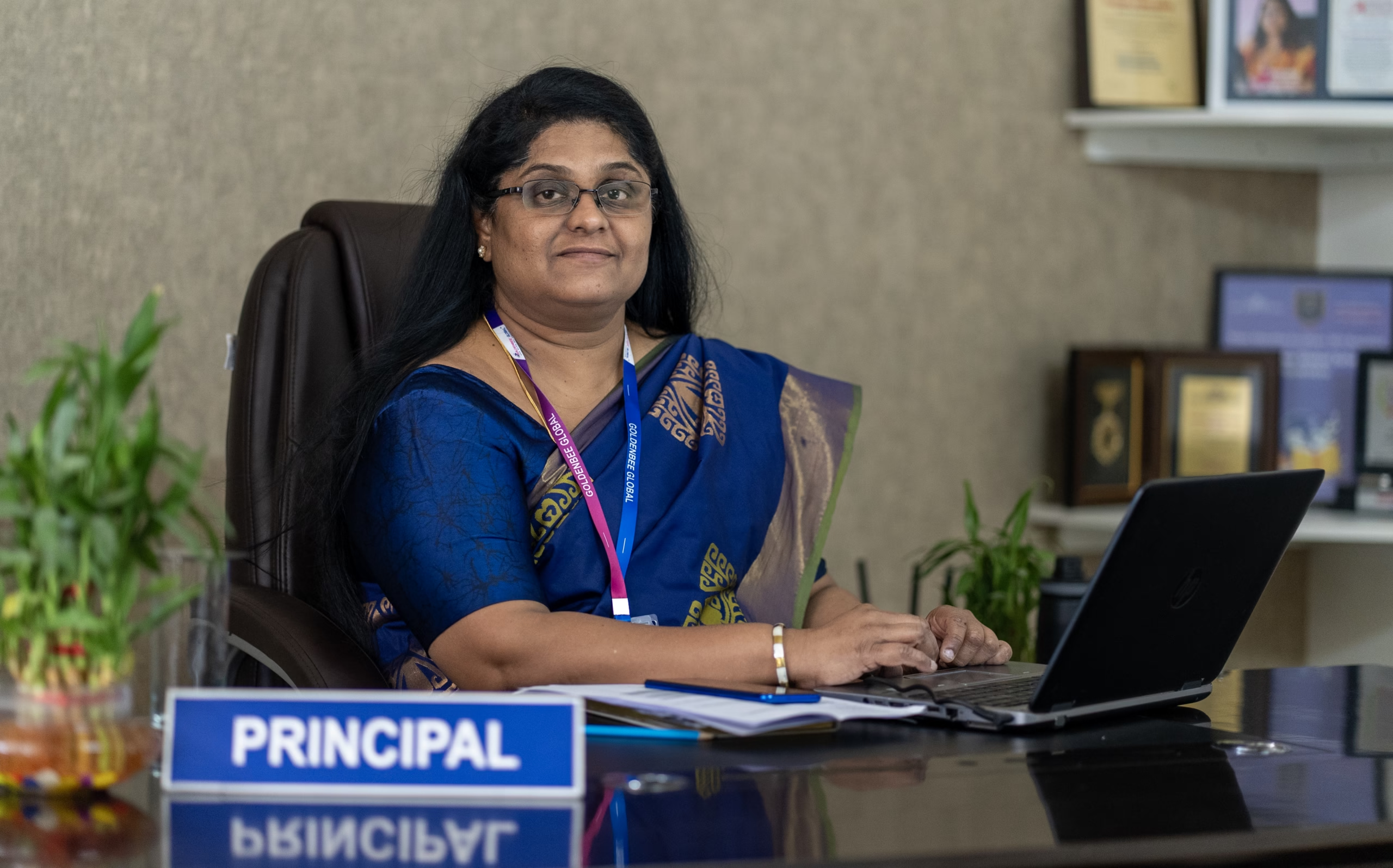
Most conventional classroom environments have a tendency to box disciplines like math, once a week, science another time, and history in between. Though this format delivers content, it rarely demonstrates the interdependencies between disciplines. Students are left to speculate how their education translates beyond texts.
Benefits of Integrated Curriculum for Real-World Learning Success
Integrated learning which we adhere to in GoldenBee Global School, Bangalore, is not a methodology but the building block of our philosophy of education. Integrated learning stimulates curiosity, creativity and confidence in every learner.
Here, we discuss the best five benefits of integrated curriculum and how it equips pupils for a dynamic world.
What is an Integrated Curriculum?
Integrated curriculum brings together many topics to a conceptual, coherent design. Rather than as separate disciplines, students learn relationships between disciplines. For instance:
- Mathematics of architecture, patterns, shapes and proportions.
- Science as narrative, making abstract ideas accessible and real.
- History as a form of technology, linking past inventions to innovations.
This methodology, prevalent in the finest schools of the CBSE and the ICSE, emphasizes the “how” and “why” of each concept, as opposed to isolated information.
Improves Understanding and Memorization
When connections between other disciplinary ideas are observed, understanding increases. This contextual learning makes information a lifelong understanding as students are able to understand the purpose of what they are learning.
Basically, benefits of an integrated curriculum enables you to learn less but learn more in a deeper sense retaining lessons that stick.
Fosters Problem-Solving Capability and Thinking Critically
Real-world problems hardly lend themselves to a single subject. Problems demand flexibility, thought and imagination traits that integrated learning inherently encourages.
For instance, in a “Climate Action” project, students can:
- Apply science to the study of the cause of climate change.
- Calculate footprints of carbon with mathematics.
- Make awareness projects based on social studies.
This combination strategy engenders both thinking and creative talents, and equips pupils to handle the multilayered demands of post-school existence.
Provides a High-Level Perspective
GoldenBee Global School classes demand project work that involves hands-on activity, discussion and experimentation. Instruction comes from curiosity, imagination and exploration.
Few children, whether they are kinesthetic, auditory or visual, are unable to help but become completely engrossed. Integrated curriculum makes learning meaningful and enjoyable to provide intrinsic motivational and lifelong curiosity about learning.
Bridges Learning to Real-World Contexts
Integrated learning allows students to apply skills practically. Historical events may be tied to innovations currently occurring. Statistics or environmental analysis may be exercised when speaking of mathematical skills.
This methodology gives a comprehensive picture, illustrating to children how education impacts the world, work and day-to-day life.
Fosters Communications and Collaborative Skills
Students collaborate to conduct research, design and present projects. Students learn to collaborate, to accept differing views and to communicate.
Experiences of this sort instill confidence, communication fluency and cooperativeness in students as needed to perform well in higher education and careers.
How GoldenBee Utilizes Integrated Learning
Integrated learning at GoldenBee Global School is more than a method, it’s a philosophy. This is how we apply it:
Project-Based Learning: Projects such as Sustainable Living or Innovation Across Time blend science, humanities and arts.
Cross-Disciplinary Assessments: Students demonstrate ideas, prototypes and projects solving real-world problems.
Shared Instruction: Teachers from each department collaborate to make shared lessons and design integrated and interactive activities to learn.
Through this methodology, GoldenBee fully utilizes the benefits of integrated curriculum to cultivate learners’ flexibility, critical thinking and creativity.
FAQs
- What is an integrated curriculum?
An integrated curriculum intertwines individual subjects like math, science, or history as a total learning experience, which allows students to value real-world connections. - How does integrated learning help students?
It promotes insight, creativity and thinking skills by connecting concepts between different subjects rather than isolating teaching. - Why is integrated learning important at GoldenBee Global School?
GoldenBee uses integrated learning as its core philosophy to nurture curiosity, collaboration, and critical thinking among students. - What are some examples of integrated learning activities at GoldenBee?
Projects like Sustainable Living or Climate Action combine science, math, social studies, and arts to solve real-life problems. - How does this approach prepare students for the future?
In enabling collaboration, communication, as well as transfer to life, integrated learning equips learners for further studies as well as for contemporary workplaces.
Conclusion
Integrated curriculum re-prioritizes learning since it interconnects ideas, evokes thinking and carries learning to real life. GoldenBee Global School, Bangalore, subscribes to it since it makes children innovative, confident, and lifelong learners.
Experience the Benefits of Integrated Curriculum of GBG
Note how we allow learners to explore, to create and to excel.
- Explore Our Curriculum Information – https://goldenbeeschool.edu.in/academics/
- Schedule a Campus Visit Now – https://goldenbeeschool.edu.in/contact-us/
Learning at GoldenBee Global School has nothing to do with learning subjects, it has to do with a discovery that unites minds, sparks imagination and prepares children for life.
Please check out the reference, Benefits of an Integrated Curriculum for K–12 Instruction
Blog crafted by Ghowthami M, Content Developer,
Rankyouhigher, Coimbatore.














